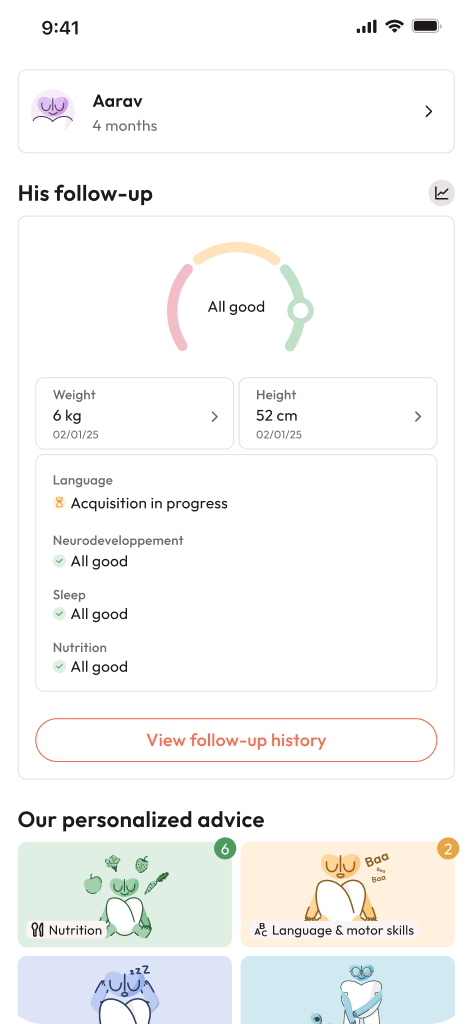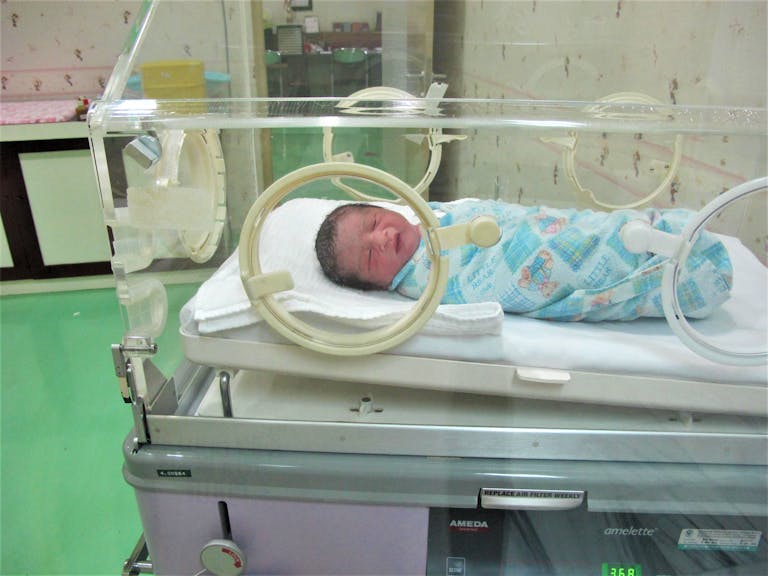Every parent, sooner or later, faces that peculiar blend of fatigue and awe: a 4-month-old whose sleep suddenly changes, as if some unseen hand has pressed a mysterious “reset” button. One night, long peaceful stretches—and the next, a symphony of brief naps, abrupt awakenings, and bedtime uncertainty. Why does this happen? Is it your routine, a phase, or something physiological? At 4 months old, your baby’s brain is evolving at lightning speed, and so are the patterns that regulate sleep. The notorious “4-month sleep regression”—a phrase you may have searched in desperation—signals not disorder, but developmental progress. Still, knowing this rarely soothes a parent at 3 a.m. Here, discover how to improve baby’s sleep from 4 months using methods rooted in medical expertise, neurodevelopmental science, and practical strategies perfectly tailored for what families actually experience. Get ready for evidence-based solutions—there’s hope, and you’ll see why.
Recognising and Respecting Your Baby’s Sleep Needs: The Science Behind the Change
Why does a 4-month-old suddenly need help to sleep? Around this age, a baby transitions from the “infant” sleep cycle, which is mostly deep sleep, to a two-phase system: deep (non-REM) and light (REM) sleep. As their cycles become more “adult-like”, partial arousals in lighter sleep result in more frequent waking. Physiologically, your baby now needs approximately 14 to 16 hours of sleep in 24 hours, combining restful nighttime stretches (10–12 hours) and several naps total around 3–4 hours. It’s a delicate balance: too little daytime rest can set the stage for night-time disruption, as overtiredness triggers cortisol (the stress hormone) rather than sleep-friendly melatonin.
Try extending day naps to 60–90 minutes—even if this means returning briefly to comfort your child and help transition between sleep cycles. Consistency in the rhythm of naps and bedtime directly signals your baby’s biological clock—the circadian rhythm—bringing stability to their developing nervous system.
Building a Predictable Sleep Rhythm: Why Routine Matters More Than Ever
Picture this: every day following a similar schedule quietly teaches your baby’s brain when to expect rest and when to be alert. Set waking time, nap windows, and evening bedtime as reliably as possible. For example, waking by 7 a.m., a first nap before 9 a.m., sequenced naps, and bedtime near 7–8 p.m. A regular sleep pattern leads to longer, more restful stretches, while irregularity tends to fragment sleep, creating a self-perpetuating cycle of exhaustion.
Babies with structured days often enjoy deeper, uninterrupted sleep at night. Need a reference? Many sleep experts highlight the benefit of keeping daytime wake windows—intervals your baby is awake—between 90 to 120 minutes. Overly short or long awake times cause restlessness or resistance.
Balancing Activity, Calm, and Sensory Comfort
Vigorous kicking, supervised tummy-time, and even simple games set the stage for restful sleep, by allowing energy expenditure and development of motor pathways. But the hours leading to sleep demand a shift: soften the mood, reduce ambient noise, dim the lights (melatonin’s best friend), and favour gentle activities like swaddling in an arms-free sleep sack, soft music, or looking at picture books.
Many parents believe more activity equals sleepier babies, but in reality, overstimulation often results in fragmented naps and difficulty winding down. Instead, try gradually shifting from lively play toward soothing rituals—your baby’s brain responds to sensory cues as much as to the clock.
The Art and Science of a Bedtime Routine
Sleep professionals and paediatricians both agree—a 15–30 minute bedtime routine is worth its weight in gold. Why so universally recommended? The sequence (for example: bath, changing, short story, lullaby, white noise, nightlight, and gentle goodbyes) forms predictable associations between these steps and the act of falling asleep. Neurocognitively, these patterns help “programme” your baby’s sleep-wake brain networks.
Follow the same order every night, and eventually, the first yawn after a story or the final dimming of lights acts as a powerful cue for sleep. Children who benefit from a consistent routine typically adapt with less protest and quicker falling asleep—keys to improve baby’s sleep from 4 months.
Early Bedtime: Gateway to Deeper Rest
Why do paediatricians and sleep scientists so often advocate early bedtimes? Simply put, the deepest and most restorative sleep cycles occur in the first third of the night, usually before midnight. Putting your baby to bed by 7:00–8:00 p.m. takes advantage of this natural brain chemistry, leading to longer, higher-quality stretches and a happier wake-up. Resisting late bedtimes is, paradoxically, one of the fastest ways to improve baby’s sleep from 4 months.
Encouraging Self-Soothing and Sleep Independence
Do you rock, nurse, or cradle your baby until the last eyelash flutter? While comforting, strong sleep associations can result in a baby expecting the same intervention each time a sleep cycle ends. At 4 months, start gently reducing these dependencies: unlatch before deep sleep during feeding, limit rocking, and try laying your baby down when drowsy but awake—a concept called “sleep initiation association.” Over time, your baby learns to fall back asleep without cues, an essential element of autonomous sleep. The reward? Less frequent wake-ups, easier bedtime transitions, and an immensely valuable skill for the years ahead.
Fine-Tuning Wake Windows, Naps, and the Day–Night Relationship
Chronobiology—the science of circadian rhythms—tells us that naps and wake times must fit a specific window to get optimal results. At this age, the first wake period may be only 90 minutes after morning waking, stretching to 2 hours before bedtime. Miss the window, and you’ll see fussiness, irritability, or “catnaps” that leave your child less rested, not more.
Sample schedule for a 4-month-old:
- 6:30–7:00 AM: Wake up
- 8:00–9:15 AM: First nap (1–1.25 hours)
- 11:00–12:00 PM: Second nap (up to 1 hour)
- 1:45–2:45 PM: Third nap (up to 1 hour)
- 4:45–5:15 PM: Short nap (30 mins)
- 6:45 PM: Bedtime routine
- 7:15 PM: Bedtime
Pay close attention to “sleepy cues”: rubbing eyes, yawning, sudden quietness, or even turning away. Start the winding-down process at the first sign to avoid overtiredness which will actually decrease sleep quality.
Room Environment and Sensory Supports: The Science of Sleep Space
The sleep environment deserves nearly as much planning as your routine. A dark (use blackout curtains), cool (ideally 20–22°C), and quiet room is ideal for deep sleep. A white noise machine—producing a steady sound like a gentle fan or rainfall—masks environmental noises, providing comfort reminiscent of the womb. Remove cords, soft bedding, and plush toys to prevent sleep hazards.
Nutrition and Night Feeding: Feeding Patterns and Sleep Quality
Feeding patterns become central at 4 months, a point when curiosity may sometimes override hunger at the breast or bottle. To improve baby’s sleep from 4 months through the night, encourage frequent and full daytime feeds, optimally every 2.5–3.5 hours. The “dream feed” technique—offering a feed around 10–11 p.m. without fully waking the child—may extend longer night stretches for some babies.
Evaluate night waking: is it hunger or a need for comfort? True hunger typically shows in rooting or strong, persistent sucking. Gradually lengthen intervals between night feeds as daytime intake improves—over time, physiologic readiness for longer overnight rest emerges.
Safe Sleep: Swaddling, Sleep Sacks, and Pacifiers
At 4 months, many babies are flirting with “rolling over”—a developmental leap that makes traditional swaddling unsafe. Shift to a sleep sack with arms free as soon as any rolling begins. Pacifiers can be a valuable self-soothing tool—let your baby keep it if they desire, but no need to replace it if it falls out once they are asleep.
Keep the cot free of any cords, loose blankets, pillows, or teddies. Back-sleeping on a firm, flat mattress remains essential for sudden infant death syndrome (SIDS) prevention according to global paediatric guidelines.
Understanding and Surviving the 4-Month Sleep Regression
The 4-month sleep regression—a combination of more night waking, frequent short naps, and increased fussiness—lasts two to four weeks. Sometimes, it feels endless. You may wonder, is something wrong? But these changes reflect new brain maturity and evolving sleep cycles—not parental mistakes. Sticking to routines, using brief pauses instead of rushing in instantly at every little whimper, and offering comfort as needed eventually pay off. Consistency, patience, and respect for your child’s signals—the trio most likely to improve baby’s sleep from 4 months, even when things feel unpredictable.
When to Seek Extra Guidance: Trust Your Instincts and Medical Experts
Frequent waking, inconsolable crying, feeding difficulties, or severe distress isn’t inevitable and shouldn’t be ignored. Some babies experience medical conditions—gastroesophageal reflux, food allergies, or early signs of disorders needing specific attention. Trust your observations, and consult your healthcare professional or a sleep consultant for tailored advice when ordinary adjustments haven’t worked.
Key Takeaways
- Recognise that shifts in sleep—frequent waking, short naps, restlessness—around 4 months are part of typical neurodevelopment, and not a failure of parenting or routine.
- To improve baby’s sleep from 4 months, embrace regular rhythms: set consistent wake, nap, and bedtime routines, using sensory cues and scheduled feeds to “teach” your baby’s circadian rhythm.
- Encourage independent sleep skills to foster healthier, longer stretches—lay down drowsy but awake, limit strong associations like nursing or rocking to sleep.
- Structure the sleep environment to minimise distractions, using white noise, cool temperatures, and safe sleep surfaces.
- Attend to medical and nutritional factors—track full feeds, monitor for discomfort or medical issues, and consult professionals with persistent concerns.
- Maintain patience; true sleep learning is gradual, varying from child to child.
- Consider leveraging expert support and digital resources: Download the application Heloa for personalised advice, health questionnaires, and tailored support for your child’s development—evidence-based guidance designed with families in mind.
Questions Parents Ask
How do I know if my 4-month-old is sleeping enough?
Typically, a 4-month-old will need 14–16 hours of total sleep in a day, including 3–4 hours of naps. If your baby wakes cheerfully, stays alert in play, and doesn’t struggle excessively going down for sleep, rest needs are usually being met. Signs like frequent fussiness or chronic trouble with falling asleep might mean your child’s sleep rhythm requires some adjustment. Individual patterns are normal—observe your child closely and adapt routines accordingly.
Is it common for 4-month-olds to wake up several times at night?
Absolutely—it’s physiologically typical at this stage. Their sleep cycles are maturing, moving through lighter phases that prompt more frequent partial awakenings. This often peaks during the 4-month sleep regression. Comfort, gentle reassurance, or sometimes a feed may be needed, but most babies improve as their new rhythm stabilises, especially when routines are consistent.
Gentle strategies to help my baby nap longer during the day—do they work?
Consistency wins here. Pre-nap routines—dimming lights, using white noise, and keeping pre-nap activities calm—send a powerful “sleep time” signal. If your baby wakes early from naps, try two or three minutes of hands-on reassurance (gentle patting, soft shushing) to see if he or she will resettle. Over weeks, most children naturally learn to connect sleep cycles, lengthening daytime naps without force or distress.
Still searching for answers or personalised tips? The world of paediatric sleep is complex, but support is always within reach—trust your observations, turn to your paediatrician, or explore the application Heloa for expert, tailored health advice for your child.









